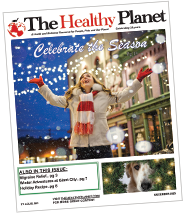by Cindy Gilberg
When do the hummingbirds return to St. Louis? Their arrival is almost perfectly timed to the blooming of the wild columbine in our woodlands, sometime in late-April. The promise of nectar is welcome after an exhausting spring migration north from Mexico and Central America. Known only in the western hemisphere, there are over 300 species of hummingbirds but only one that commonly frequents our gardens – the ruby throated hummingbird. This tiny gems have iridescent plumage and are, as John J. Audubon once remarked, “glittering fragments of a rainbow”. Fondly referred to as ‘hummers’ by many, their preferred native habitat is woodland edges. A good mix (about 50/50) of open area to tree and shrub plantings is an easily attained landscape in residential properties. This will provide everything they need from shelter and nesting areas to open arenas for their aerial displays during mating season.
Because of the hummingbird’s high metabolism and need for copious amounts of energy-rich nectar, they can’t afford to waste time foraging – flowers help them out by advertising both color and shape. Red, yellow and orange flowers as well as tubular flowers are ‘flags’ that draw the attention of hummers. These flowers co-evolved with long-tongued creatures (hummingbirds and butterflies), offering a tasty meal in exchange for pollination. A lesser known fact is that these miniature birds compliment their sweet tooth by hunting for small insects that add much-needed protein to their diet.
The key to creating a garden attractive to hummingbirds as well as many other insects and birds is to plant a diverse backbone of the native plants they depend on for survival. Be attentive to the bloom-times, adding in flowers for each season so that nectar is always available. The color red will attract them initially yet they also forage on plants such as blue salvia, white penstemon and pink bergamot. The plant list should also include flowers that attract small pollinating insects, for example coneflowers and other composite flowers as well as plants such as mountain mint and buttonbush. Design plantings that include masses of each species to create big splashes of color – hummers prefer to frequent easy buffets. The final touch is to incorporate various trees and shrubs for shelter and nesting sites. Don’t be tempted to spray pesticides – using natives eliminates the need for pesticides, ensuring that these tiny winged jewels won’t die from exposure to harmful chemicals.
Springtime offers quite a few choices for nectar besides columbine. Bluebells, woodland phlox, wild geranium and rose verbena are just a few that can be included. The siren-red flowers of fire pink are another guaranteed magnet as are the red, tubular flowers of the red buckeye tree. I was surprised to observe hummingbirds frequenting a clump of copper iris in my garden but later read that irises are among those plants desirable to hummers.
Summer marks the beginning of mating season and these bold little birds waste no time to attract a female, stopping only to replenish their supply of food. Watch for the courtship dance of the red-throated males – a spectacular swooping U-shape flight. Nesting soon follows as females collect spider web strands for gluing their minute cup-shaped nests to twigs along with bits of lichen and assorted fluff. The result is about as big as a walnut and will hold 2 eggs. An abundance of summer flowers are available to satisfy their voracious appetites. The bright orange flowers of butterfly weed, trumpet creeper and our well-behaved native honeysuckle serve up delectable meals. Add some pink monarda, tall phlox, red royal catchfly and blazing star for further variety. An unusual plant for dry sites is the American aloe. Though hummers aren’t attracted by fragrance, in the evening the aloe emits a delicate fragrance from its long, tubular flowers, an indication that it counts on more than one group of pollinators. Top off the summer list with yellow and purple coneflowers, sunflowers and other flowers that attract protein-rich insects.
By late summer both the adults and young enter into a contest, vying for their spot at flowers and feeders. They become quite territorial and aggressive in an attempt to stock up on food as the moment approaches for them to once again fly south for the winter. Among the autumn flowers, the red cardinal flower reigns supreme, loving the moist, part-shade haunts that hummingbirds frequent. Another real magnet in fall is the bright orange annual jewel weed that grows in similar sites as the cardinal flower. Some more late-blooming perennials to try are turtlehead and obedient plant, both pink to white yet the tube-shaped flowers are quite evident and appealing. An additional surprise for me was the frequent visits hummers made to my hardy hibiscus – not only white but not tubular at all, yet a valuable addition to the plant list.
These amazing minute gems are creatures of habit. The same birds return to those sites that are especially attractive in providing not only great nectar sources but also water, shelter and nesting sites. The measure of your success will be evident with their arrival the following spring.
Pick up many of these plants and more at the Shaw Nature Reserve Spring Plant Sale, Saturday May 12. A wonderful collection of growers and plants will be on hand to answer questions.
From the May 09 Gateway Gardener Magazine.


